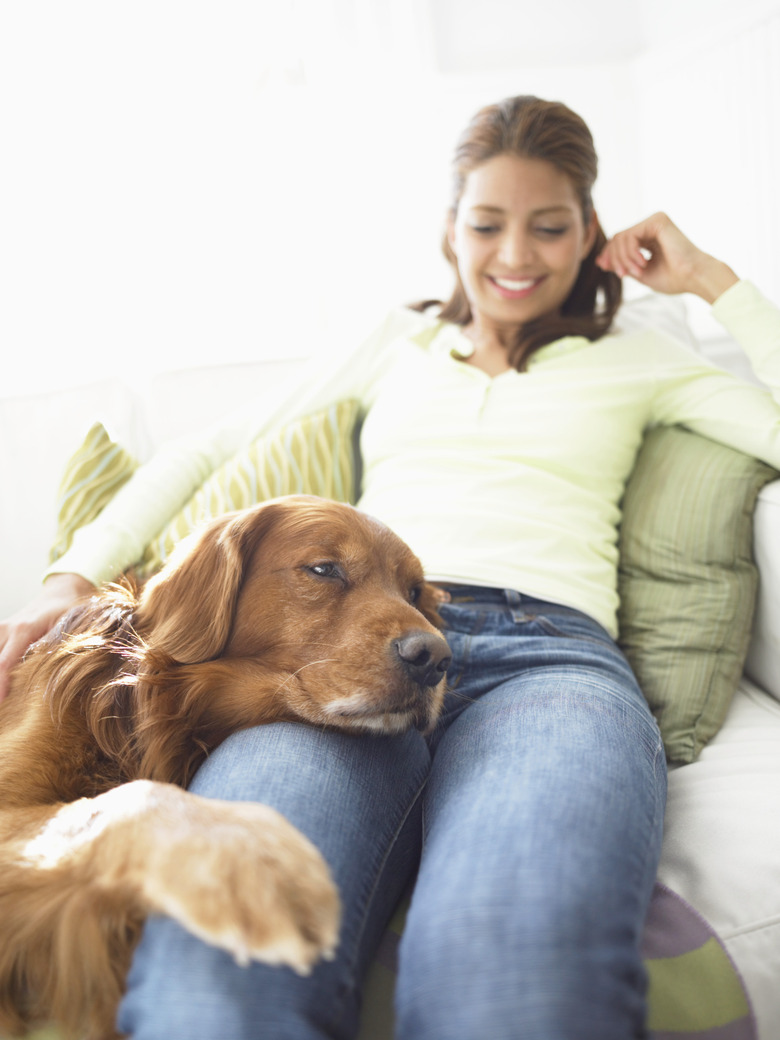Can A Dog Get Athlete's Foot?
Dogs can develop their own versions of athlete's foot via a fungal or yeast infection. In canines, the conditions aren't just limited to the feet — the infections can be found on other areas of the body as well. Veterinary treatment of the problem usually is warranted.
Canine Ringworm
Canine Ringworm
Ringworm isn't actually a worm, but rather, a contagious fungal infection that can be contracted from spore-infested soil or passed between dogs and other animals, including humans. It's caused by the tinea fungus, which is what causes athlete's foot. Ringworm looks like a raised red circle with a white or crusty center. Lesions can be different sizes and may appear anywhere on your dog's body, though the feet, legs, face and tail are primary locations. Ringworm may be crusty, itchy and uncomfortable. It usually is treated with an anti-fungal medicated cream or shampoo. Your vet may prescribe a topical anti-itch treatment. If the skin is broken, an antibiotic may be given to prevent infection.
Yeast Infection (Malassezia)
Yeast Infection (Malassezia)
Dogs can get yeast infections that are similar in nature to athlete's foot. Yeast infections develop due to water or debris getting trapped in skin folds. The infections can cause scaly, irritated skin that may be red, waxy and smell bad. Most occur in a dog's feet and ears, but they can happen anywhere on the body. Your vet may be able to assess your dog's skin problem with a physical exam, though a microscope may be needed to take a closer look at skin samples to make an accurate diagnosis. Yeast infections usually are treated with anti-fungal medications.
Skin Allergies
Skin Allergies
In humans, athlete's foot shows up as inflamed, red, itchy, cracked skin. Dogs can have similar symptoms caused by parasites or skin allergies. Flea dermatitis, food allergies and contact with toxic household and lawn chemicals can present like athlete's foot as well. Scaly, flaky, irritated skin should be evaluated by a medical professional. Avoid treating your dog's symptoms with medications or creams designed for humans without your vet's consent.
Healthy Feet Habits
Healthy Feet Habits
Regularly inspect your dog's feet for signs of redness, irritation, cracking and bad smell. Protect foot pads from cold and hot ground by using dog booties, and always wipe and dry your dog's feet when they get wet. These good habits can help you ward off potential fungal or yeast infections as well as identify other foot problems before they get out of hand.
Always check with your veterinarian before changing your pet's diet, medication, or physical activity routines. This information is not a substitute for a vet's opinion.
